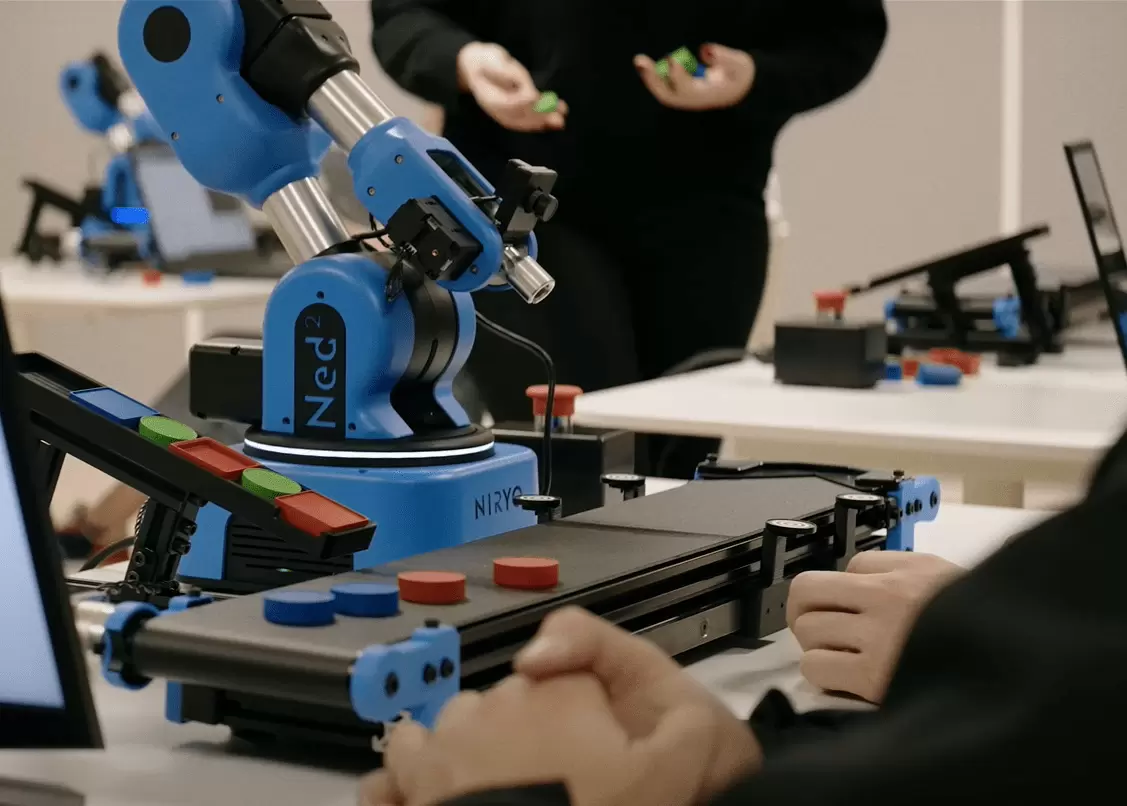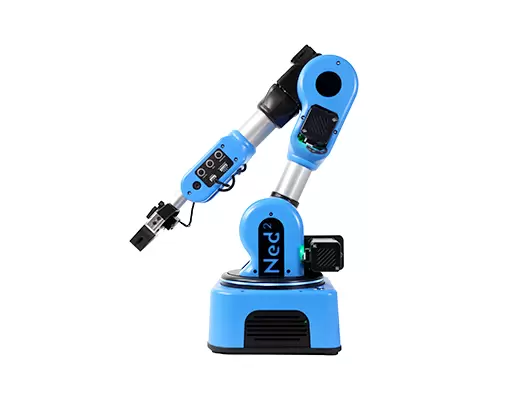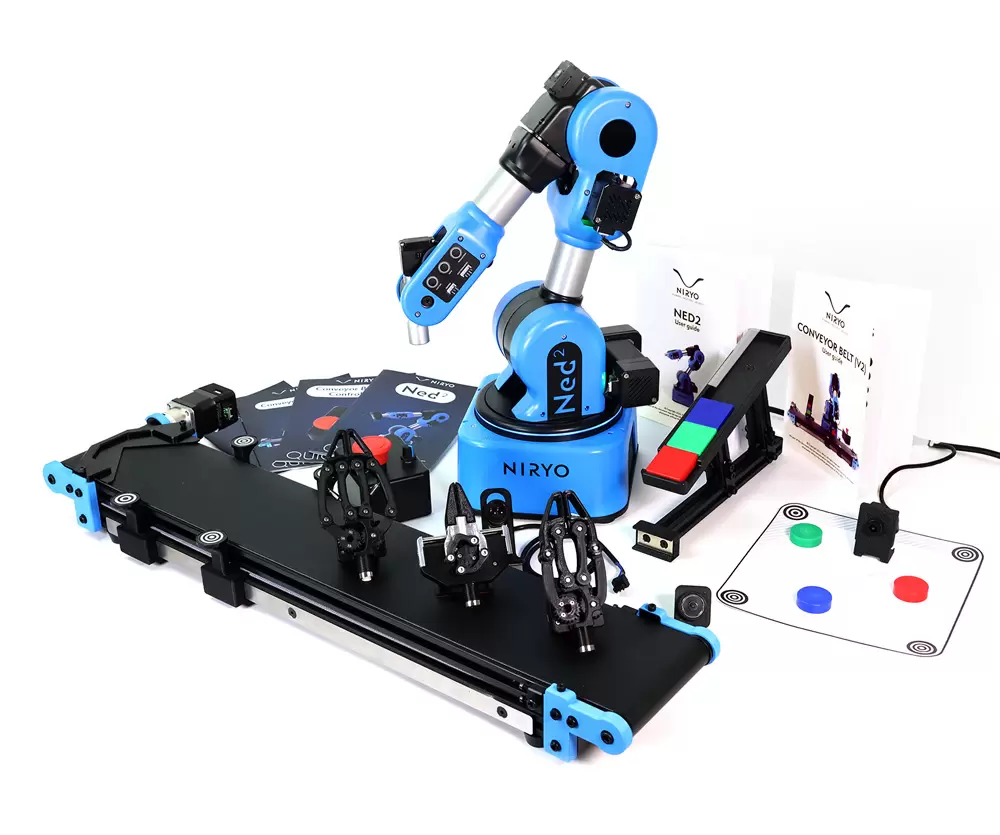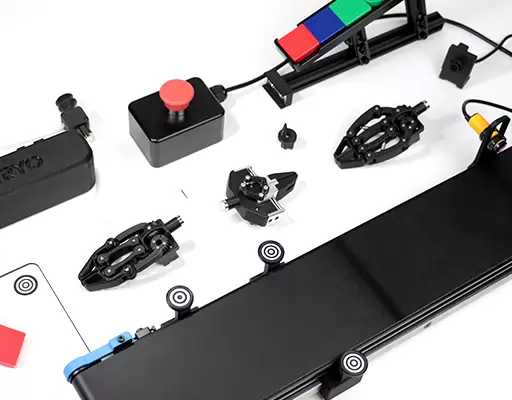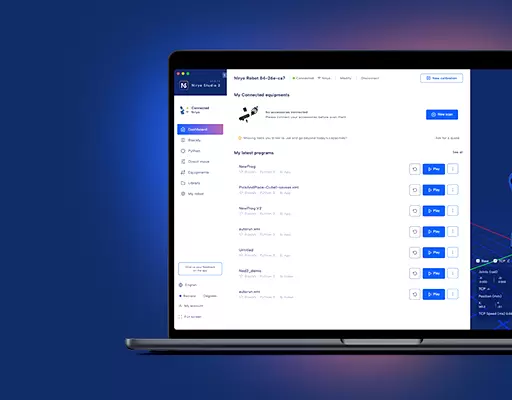Cobotics (as a reminder, collaborative robotics) appeared ten years ago in order to reduce industrial robots’ issues, such as their costs, the space they require, as well as their dangerousness.
Collaborative robots, cobots, were created in order to support humans in the realization of difficult, repetitive and complex tasks, to improve their working conditions, their health and their well-being.
If some cobots are added to working stations in which a repetitive manipulation is necessary, some other cobots such as exoskeletons are made to support the workers’ movements and compensate for the payload, in order to facilitate their tasks.
Why is it important to secure cobots?
Traditional robots are known and used for their ability to perform repetitive tasks with a very high cadency, providing them an important efficiency. This high cadency implies, nevertheless, high-speed movements that can harm workers around the robot. Thus, it is necessary to install a fenced enclosure around it, in order to remove the potential danger.
Cobots are particular robots on which are placed additional sensors able to anticipate the presence of an operator in a precise zone and able to stop in case of contact. This function allows close collaboration between the robot and the humans. The speed limit, acceleration and the robot’s force are also set by the cobotics ISO TS 15066 norm, which allows the operator to safely work in the robot’s operating area. Unlike industrial robots, cobots do not require the installation of a fence, reducing the cost of the solution, as well as the place it requires.
This additional layer of intelligence turns the robot safe for operators and people around. Nevertheless, some risks related to the tool or the process remain (cutting station or welding for instance). It is, therefore, necessary to respect the strict rules in application.
A strict and safe control
In order to consider these risks, the European Directive Machine 2006/42/CE frames and controls the integration of robotic solutions in industrial processes. It ensures the standardization of the safety actions implemented during the creation of a robotic solution.
Some international norms, in particular ISO 10218-1 and 10218-2 norms, aim to support manufacturers and integrators in the respect of the strict requirements of the Directive Machines.
Precise action plans
These standards are leading to safety action plans for cobots’ manufacturers and integrators. According to the Directive Machine’s prevention principles, a documented risk analysis must be necessarily done at the beginning of the conception in order to create a safe robotic cell.
This risk analysis allows one to choose a cobot adapted to the company’s needs and sufficiently reduce or eliminate the risk by knowing the cobot’s limits in order to protect users.
There are two existing levels to turn a cobotic cell safe:
On the cobot’s characteristics
It is possible to set the velocity, the acceleration and the force of the cobot in order to make it stop quickly enough. But these specifications have a direct impact on the performance of the solution. A reduction of the velocity can indeed cause a limitation of the cadency and then create a loss in productivity.
On the cobot’s equipment
There are different types of equipment allowing to maintain the safety of the operators working with collaborative robots.
Among these elements, we can find, from the most to the least invasive:
- Cages / fences: it’s the most used in traditional robotic
- Light curtain: it is a solution made of light beams able to detect the presence of an operator in a defined area. This area must be set thanks to multiple barriers, tangible or not, and rarely crossed in order to avoid inadvertent standstill of the production.
- Laser scrutineer (also known as Lidar sensor): it is a light system allowing to set one or more areas 175° around a defined and still point. If this area is reached, the robot’s safety function is activated.
- Torque / force sensor : this last solution consists in using the robot’s torque sensors or to add some to the robot. This solution can only be used on light cadencies.
How to implement a safe robot, then?
As a client, you can work with an integrator to conceive a safe robotic workstation. This latter is already working with dedicated control and support organizations (such as APAVE, Bureau Veritas or CETIM). Its expertise will guide you towards the right balance between investment, performance and size.
Once the solution is launched, a control organization will be mandated to certify the solution complies to the European directives.
